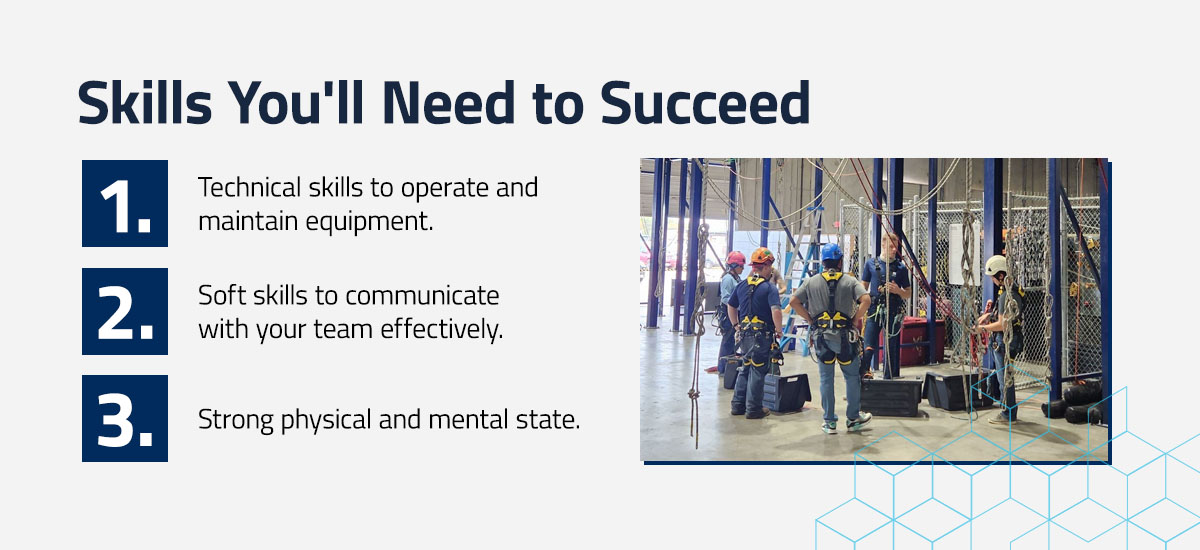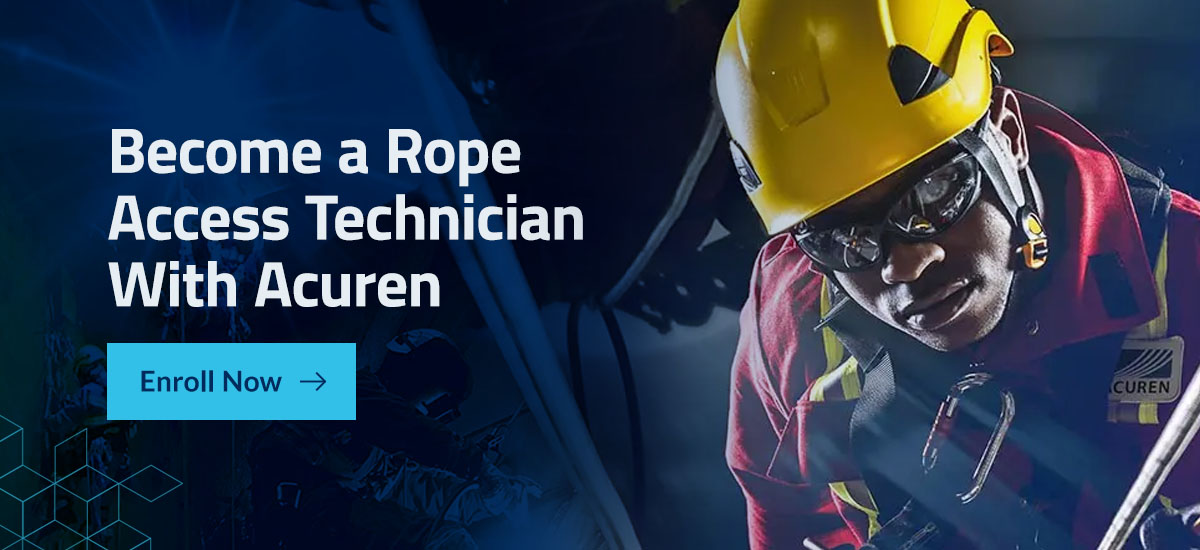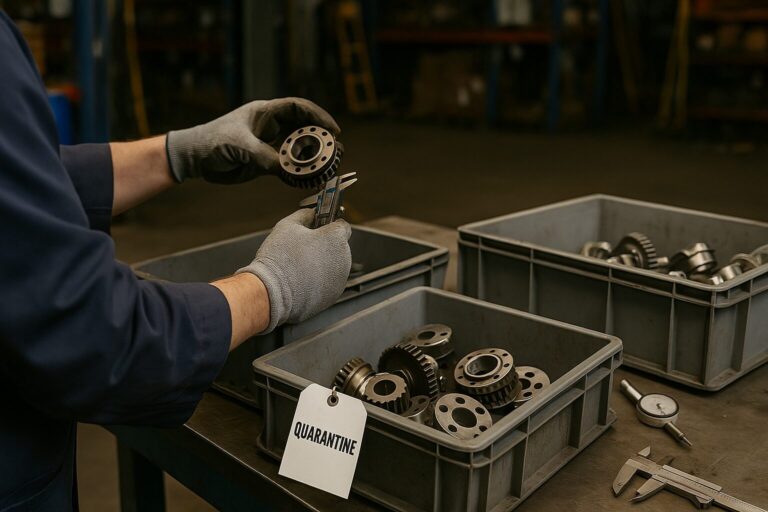Becoming a rope access technician can be a fulfilling journey. You’ll be doing important work across various industries that only skilled workers like you can do. It’s a job that offers a clear progression path. Keep in mind that being a rope access technician is not just about moving along a rope, but rather about performing a certain task: inspection, maintenance, painting, cleaning, welding, etc. The rope techniques only enable access to work locations; Therefore, you also need additional professional skills apart from rope access. Don’t worry about having familiarity with climbing, knots and ropes.
However, being a rope access technician is physically demanding, and requires an aptitude and safety-based attitude for working at height.
What Is a Rope Access Technician?
Rope access technicians are skilled workers who perform various tasks while suspended in the air. Through the use of rope and other equipment, they access hard-to-reach places, carrying out tasks such as cleaning, repairs, NDT, installations or construction. It’s also known as commercial or industrial abseiling.
The rope access technique was developed by the Industrial Rope Access Trade Association (IRATA) in the 1980’s and is widely used in different industries. However, the technique was initially developed for the offshore oil and gas industry. Today, there are many applications for the rope access technique, paving the way for more opportunities.
Industries for rope access technicians include:
- Oil and Gas (Onshore and Offshore)
- Power and Petrochemical
- Mining
- Renewable Energy
- Aerospace
- Shipping and Ports
- Telecommunications
- Construction
- Industrial and Commercial Properties
- Rock Stabilization
What Do Rope Access Technicians Do?
The duties and responsibilities of a rope access technician depend on their level of certification and the industry they work in. For instance, a construction worker may be tasked to paint the exterior wall of a building.
Here are common tasks across industries:
- Perform inspection and maintenance: Whether you work at a construction site, oil rig or another location, you may be tasked to inspect the surroundings for anything requiring immediate attention. You’ll also need to inspect your equipment and ensure it’s safe to use and properly cared for.
- Identify hazards: As part of the safety procedure, you may be tasked to identify hazards in the location. You may label locations as “access zones” or “hazard zones” and then inform your supervisor of these locations.
- Participate in rescue operations: Depending on your certification, you may be tasked with rescue operations.
- Supervise the team: If you have the highest level of certification, you may be tasked to supervise other rope access technicians. You’ll also need to ensure everyone’s safety and compliance.
Skills You’ll Need to Succeed
Rope access technicians should be able to work with few accidents. Because they perform dangerous work, there is a set of skills you’ll need to develop before you can become one of them.

Firstly, you will learn the technical skills to operate and maintain equipment. You’ll learn how to install safety devices, assess potential hazards and mitigate as needed. A typical workday of a rope access technician involves checking this equipment throughout the workday.
Next, you’ll need the soft skills to communicate with your team effectively, especially with your supervisors. You’ll need to inform them of the situation, especially regarding safety. When communicating problems you found in your inspection, you’ll also need to exercise problem-solving skills to help with the solutions.
Also, you need a healthy physical and mental state. Apart from being able to lift your body weight, you should be able to adapt to intense environments and changing situations, like bad weather.
How to Become a Rope Access Technician
Because many of the required skills are unique to the job, you’ll have to undergo rope access technician training and certification, with IRATA and the Society of Professional Rope Access Technicians (SPRAT) certifications as the most widely known. Acuren internationally recognizes IRATA’s Rope Access Certification.
IRATA is the global authority in industrial rope access. They have over 700 member companies and have trained over 250,000 rope access technicians globally. If you’re interested, you can start with the level one certification. You don’t necessarily have to take the other two certifications but have the option to upgrade once you meet the certification requirements.
Here are the requirements for each certification and what you can expect from them:
IRATA Level One Certification
This course aims to provide knowledge and training regarding the safety and inspection of rope access equipment. You’ll also learn rope access techniques supervised by an IRATA level three-certified technician.
To start, you must be at least 18 years old and complete a medical questionnaire. You don’t need previous experience, but you should be able to work at height. The course runs for a minimum of four days with a one-day assessment. The certificate you’ll earn after is valid for three years. After that, you can revalidate your level one certification or work on level two.
IRATA Level Two Certification
You need a minimum of 12 months of experience with 1,000 hours of work to take the level two certification. The course requires a minimum of four days of training and a one-day assessment. You will learn how to:
- Rig a variety working ropes arrangements
- Learn rescue techniques
- Observe safety requirements
Your level two certification is also valid for three years.
IRATA Level Three Certification
The level three certification is the highest certification you can get. You’ll need another 12 months of experience at a minimum, plus 1,000 hours of work since your second certification. The course also has at least four days of training and one day of assessment.
As a level three candidate, you will learn about the following:
- Risks and hazards
- Access methods
- Exclusion zones
- Permits
- Personnel selection
- Protection of third parties
- First aid
- Safety method statements
- Emergency planning
- Equipment use
At level three, your work may now involve supervising a team. Like other certifications, the level three certification is valid for three years.
International Code of Practice (ICoP)
IRATA offers the International Code of Practice (ICoP) to serve as guidance on the use of the rope access technique. It consists of four parts, where you will learn fundamental principles and controls, associated work practices and national legislation. This also includes topics in the certifications, such as risk assessment, safety method statements, equipment inspection and more.
How Much Does a Rope Access Technician Earn
A rope access technician’s salary will depend on their certification level and location. In the United States, it can range from $40,000 to over $95,000 annually on average.
| Certification Level | Average Pay Per Year |
|---|---|
| Level One | $40,000 |
| Level Two | $80,000 |
| Level Three | $95,000 |
In Canada, the number varies a little. Average salaries range from $50,000 Canadian dollars to over CA$90,000 per year.
| Certification Level | Average Pay Per Year |
|---|---|
| Level One | CA$50,000 |
| Level Two | CA$60,000 |
| Level Three | CA$90,000 |
Start Your Rope Access Training With Acuren
If you’re ready to build a career in rope access, our certified training programs can help you get there. Acuren delivers IRATA and SPRAT-certified instruction led by experienced trainers who teach the essential skills you need to work safely and confidently at height.
Our courses cover hoisting and rigging, inspection techniques, installations, work positioning, rescue fundamentals, and more. We also offer custom programs to meet specific industry needs.
Take the first step toward becoming a certified rope access technician by exploring our training options here!




